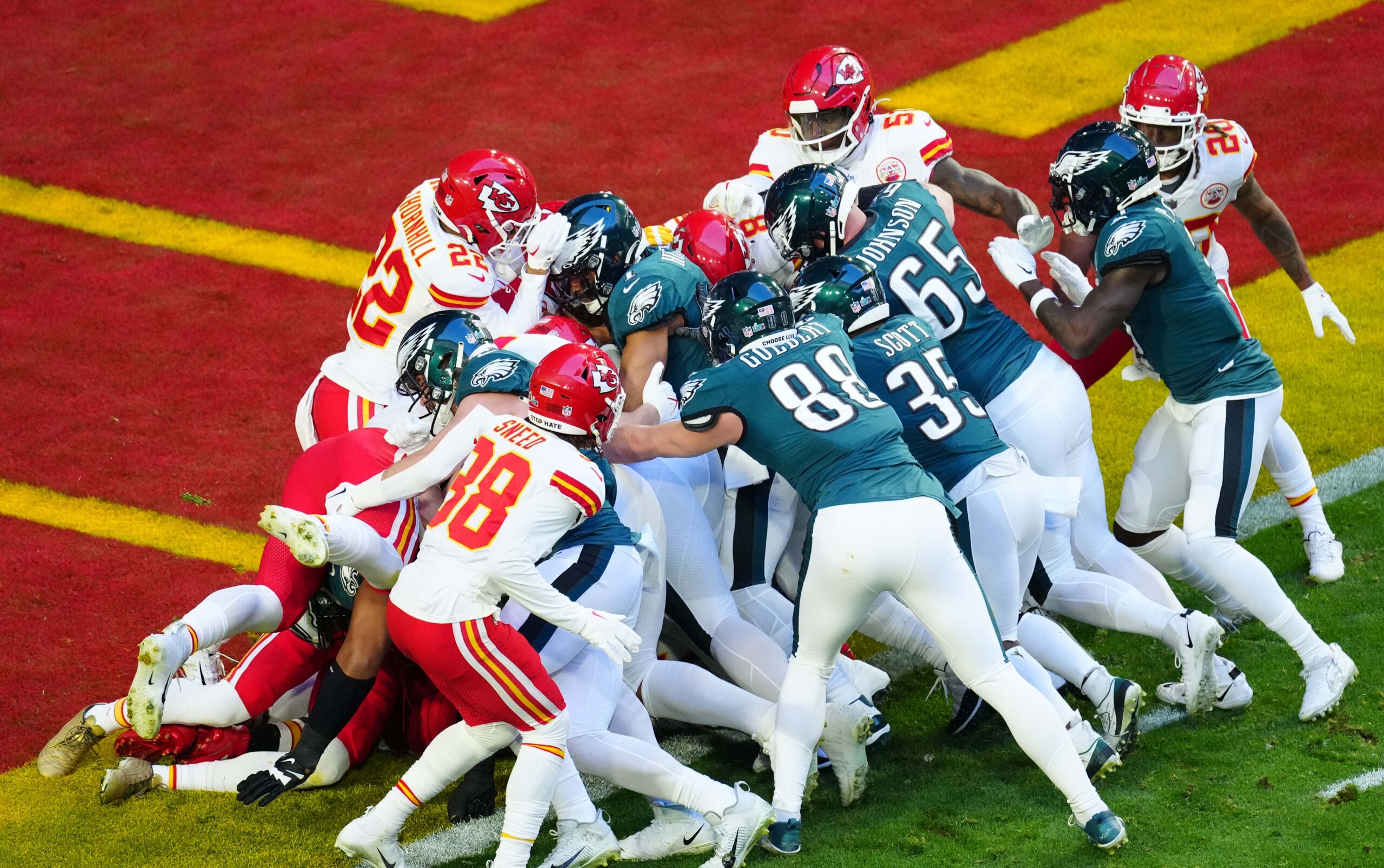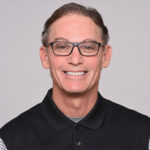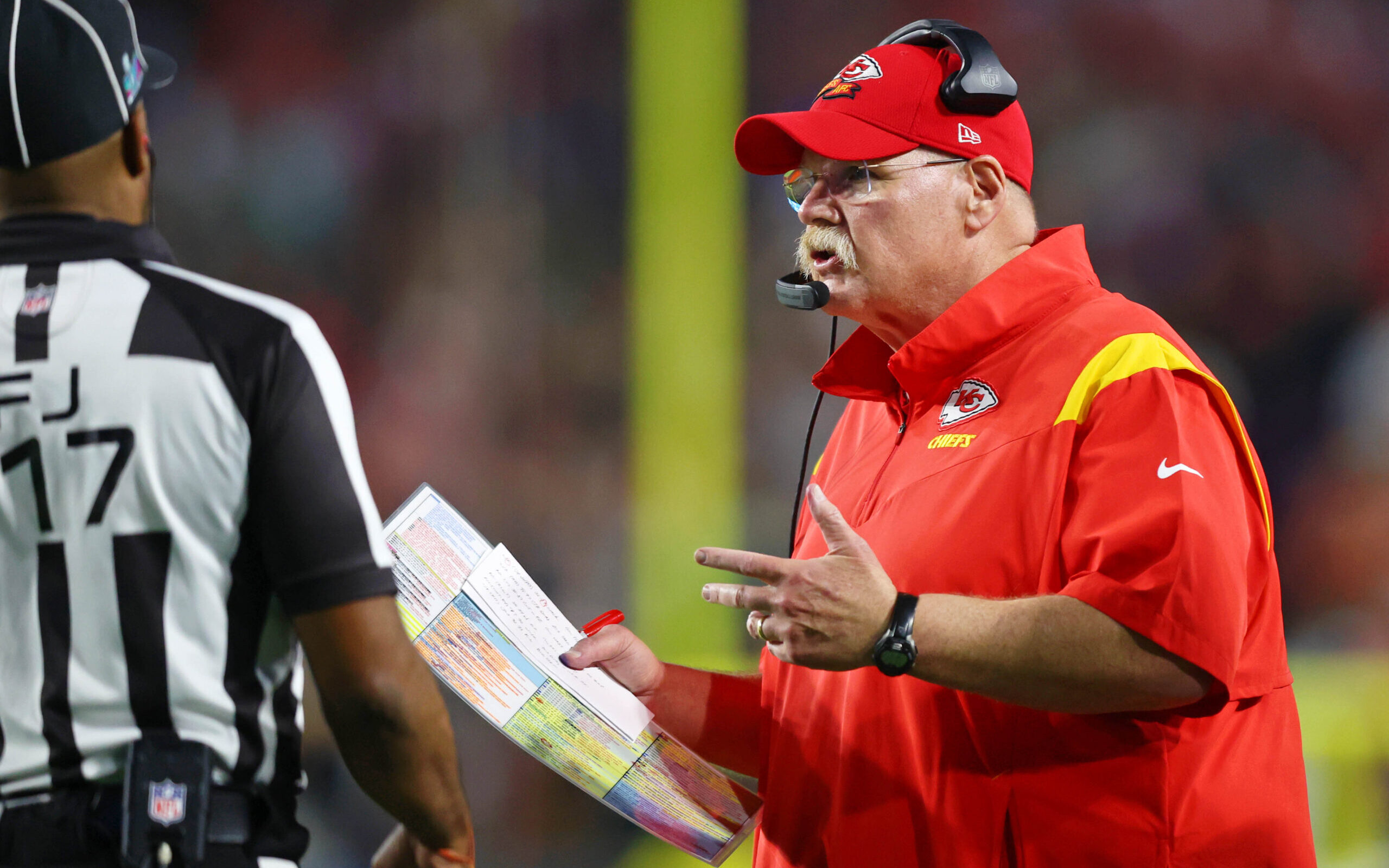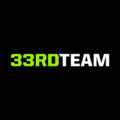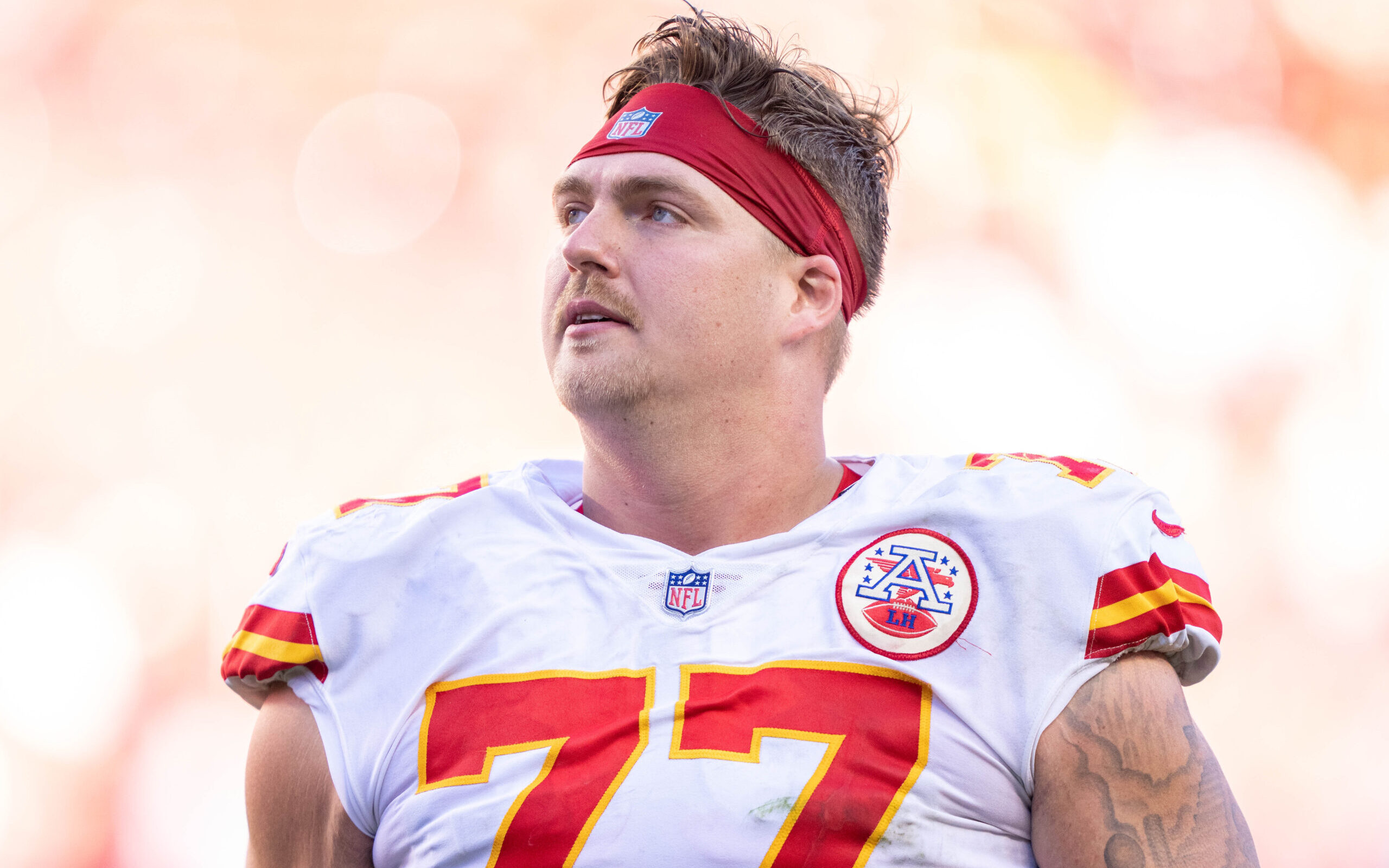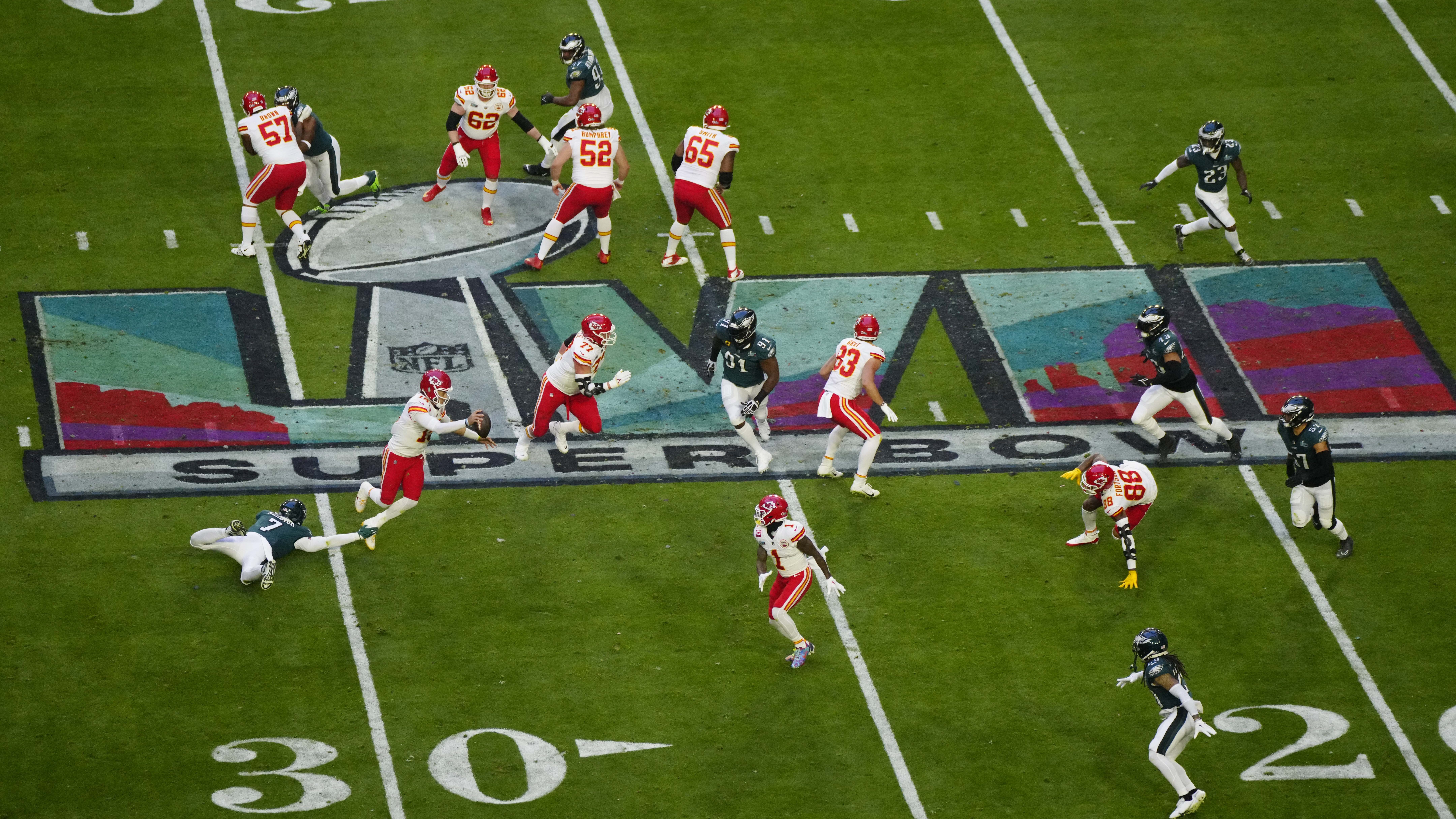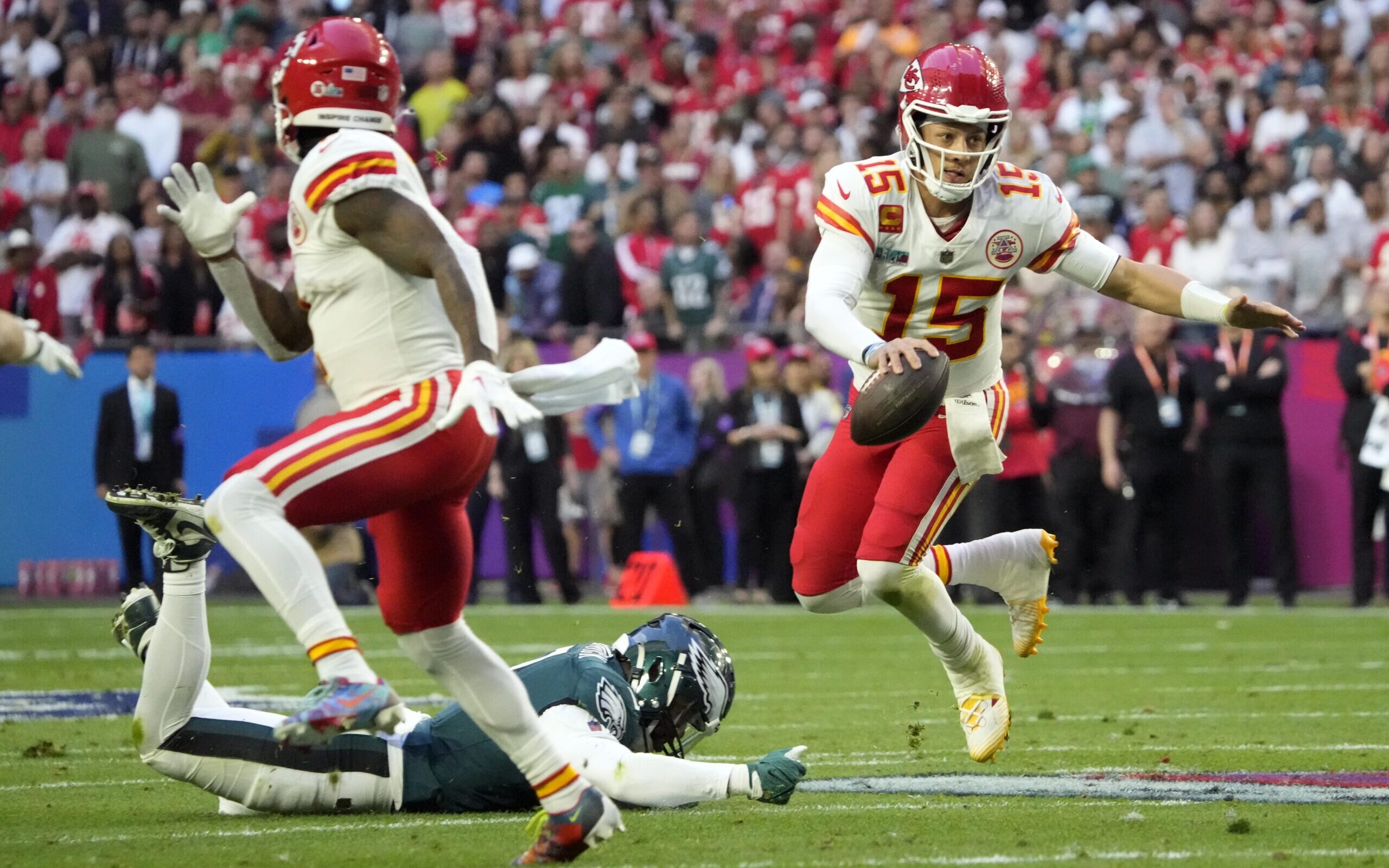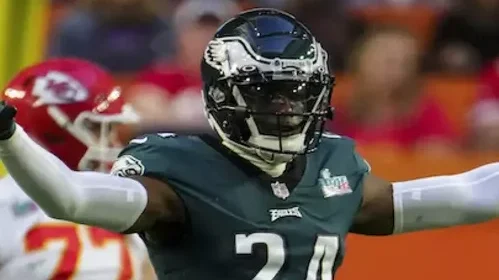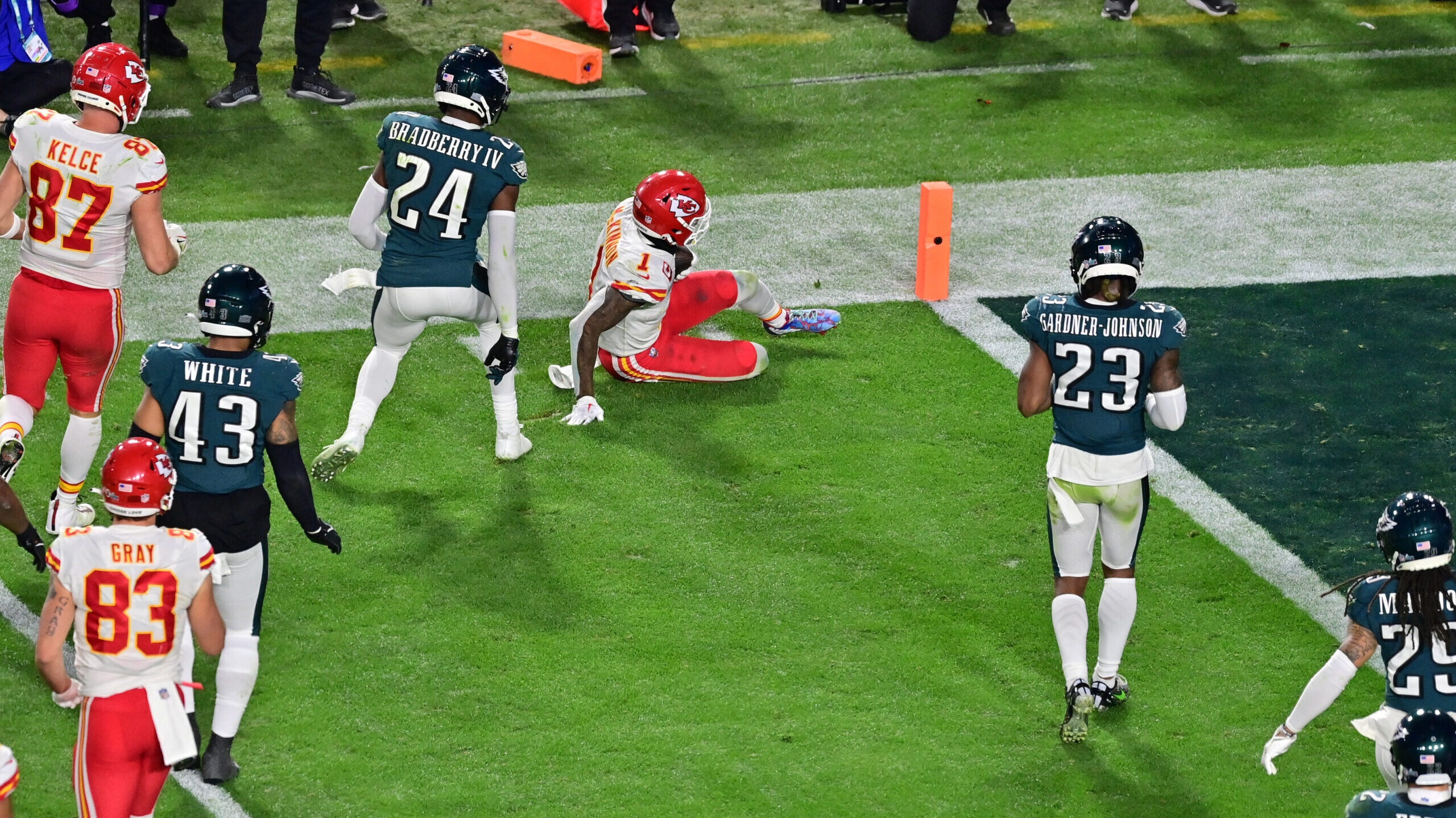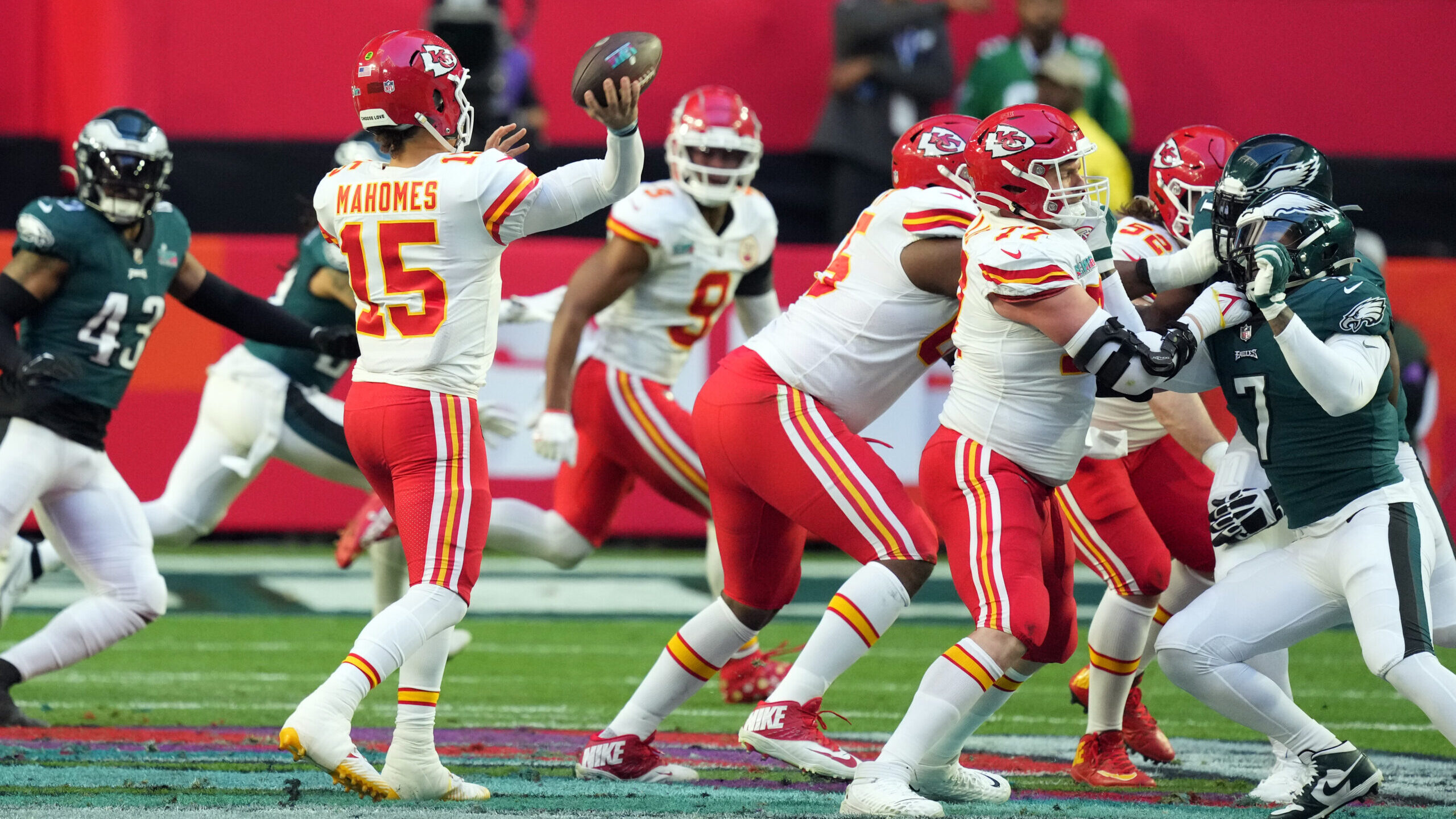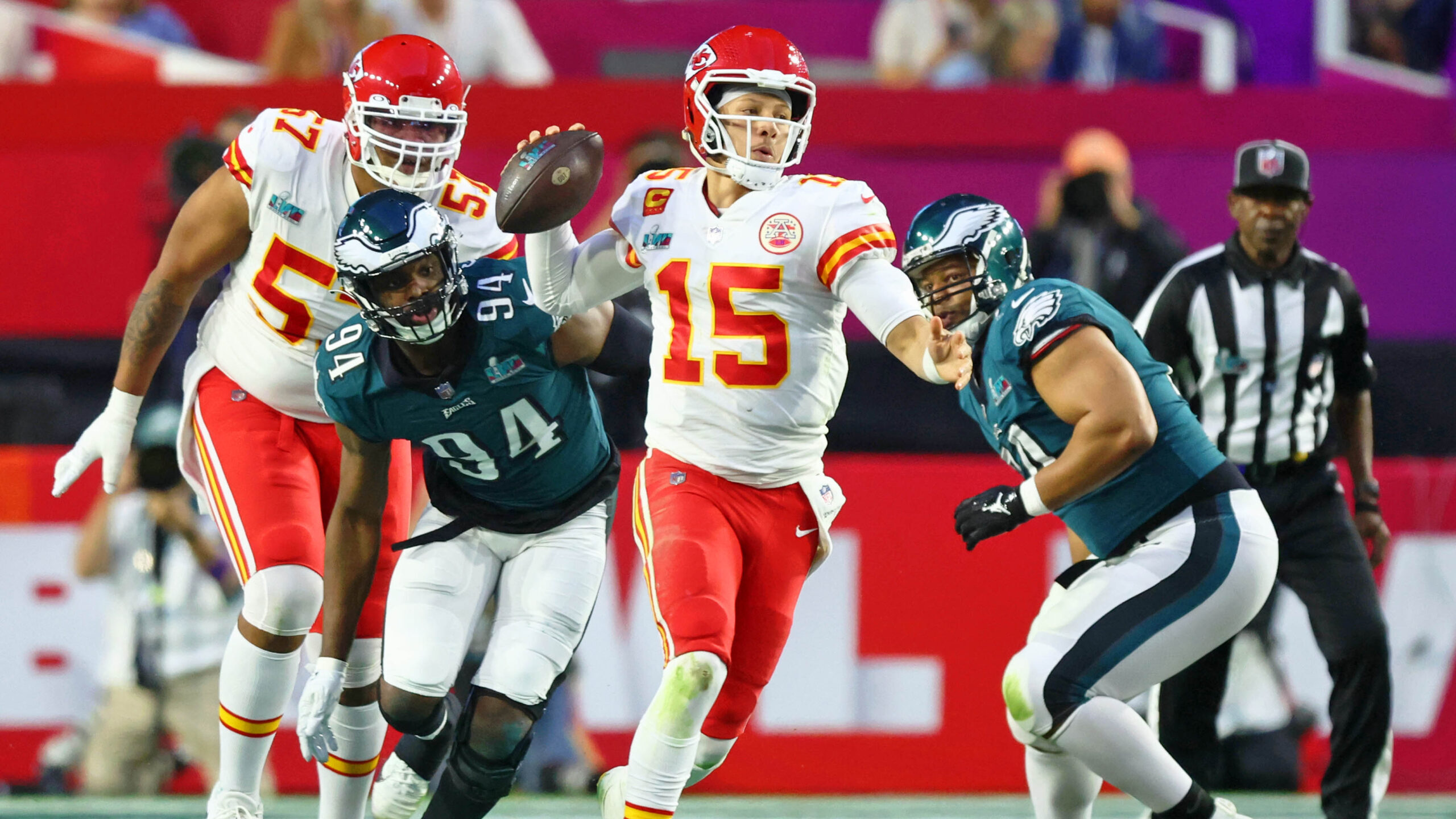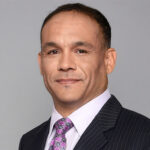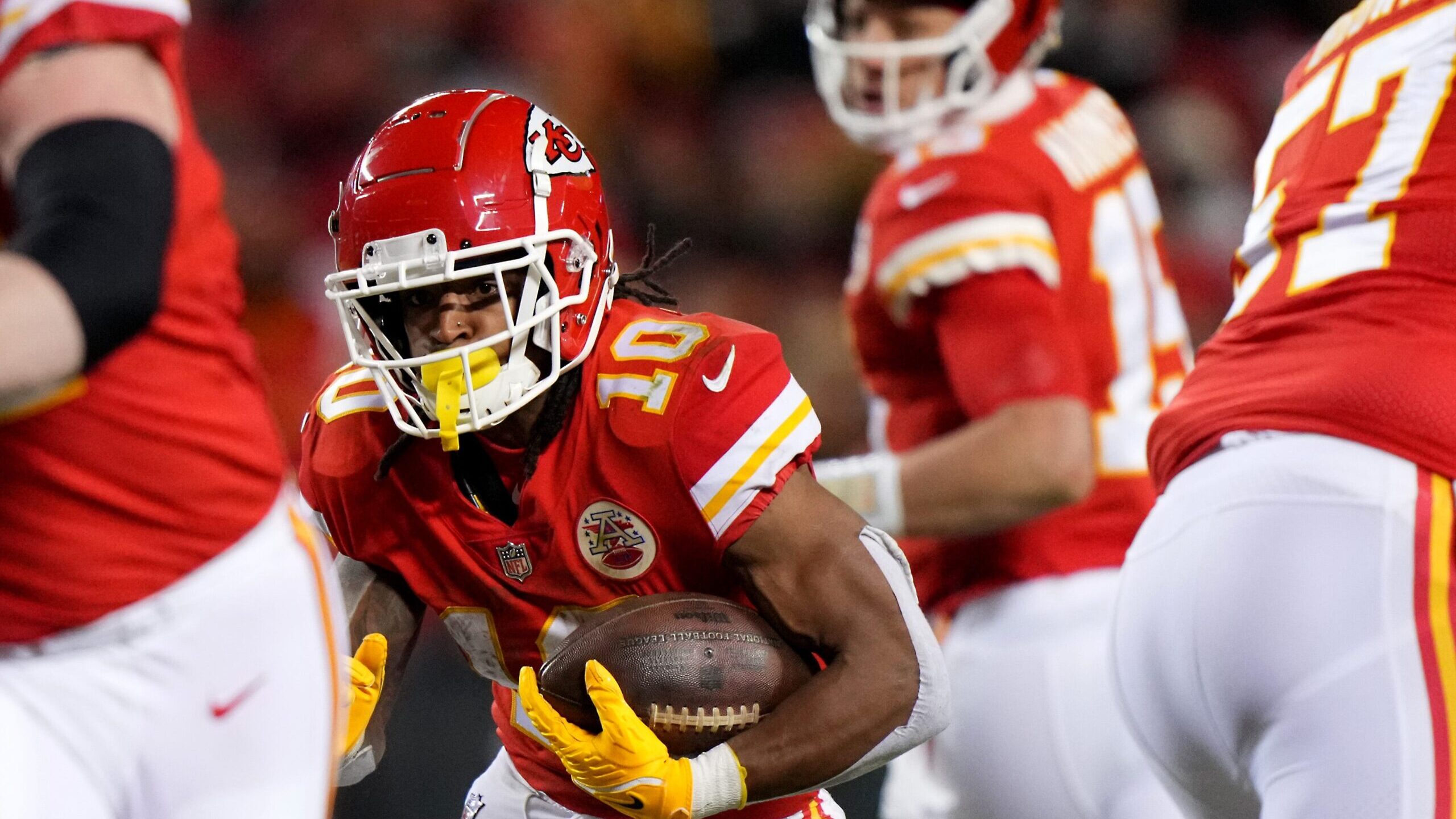Super Bowl LVII
-
2/16/23
Quarterback Push Could Be Outlawed by NFL Next Season
There is a good chance Jalen Hurts may have to fly solo on quarterback sneaks…
-
How Chiefs Ran Play in Super Bowl LVII That Hadn't Been Used in Nearly 30 Years
Marc Trestman discusses the Kansas City Chiefs' resourcefulness and ingenuity with Jade McCarthy, breaking down…
-
Chiefs' Andrew Wylie Defied Expectations in Super Bowl LVII
Edge Haason Reddick was supposed to dominate tackle Andrew Wylie and give the Philadelphia Eagles a significant…
-
Chiefs Were Ready for Poor Field Conditions at Super Bowl, Eagles Were Not
Kansas City takes time to prepare for what the field conditions might be like every…
-
NFL Players Should Take Responsibility, Not Blame Field Conditions
Much has been made of the poor condition of the field at Glendale, Ariz., for…
-
Bradberry's Accountability Showed Great Leadership for Eagles
Former NFL coach Marc Trestman discusses the importance of Philadelphia Eagles cornerback James Bradberry owning up…
-
Super Bowl LVII Came Down to Penalty, Situational Football
Matt Cassel, Marty Mornhinweg and Dave Wannstedt agree it would have been great to see…
-
Kansas City Chiefs Won Super Bowl LVII Due to O-Line's Dominance
The Kansas City Chiefs could not get into rhythm in the first half of Super…
-
Lasting Memory of Super Bowl LVII is Eagles Defense Not Showing Up
Marty Mornhinweg and Dave Wannstedt join Matt Cassel to discuss their biggest takeaways from Super…
-
Gutsy Chiefs' Running Game Flipped the Script in Super Bowl LVII
Andy Reid's ability to self scout and break tendencies changed the complexion of Super Bowl…

